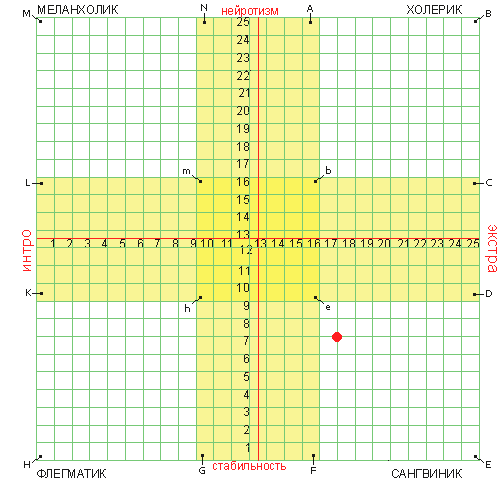Instruction
1
Eysenck test contains 57 questions, which are aimed at identifying your usual ways of reacting to a particular situation. Answering them, do not worry for a long time. Remember, there is no "right" and "wrong" answers. Choose the first option that came to mind.
2
Answer every question with "Yes", "no" or "don't know", but try to choose the last option only in extreme cases. How honestly you answer the questions will depend on the objectivity of the test result.
3
After the test is passed, compare your answers with the key and note the resulting scores. Points are distributed according to 3 scales:
- extraversion-introversion;
- neuroticism;
- lies.
- extraversion-introversion;
- neuroticism;
- lies.
4
If the last scale you scored more than 5 points, perhaps you are more cunning, answering questions, and talking about the exact test results is not necessary.
5
Data on the scale of extroversion-introversion show the orientation of your personality to the outside world, other people and events (extroversion) or the inner, private experiences and feelings (introversion). The more points on this scale you score, the more right to call myself an extrovert.
6
Data on the scale of neuroticism reflect the degree of balance processes of excitation and inhibition as a feature of your nervous system. The lower the rating on a scale of neuroticism, the more emotionally stable a person you are. This scale is called "scale anxiety".
7
Draw a coordinate plane. The horizontal scale will reflect your level of extroversion or introversion, the vertical level of neuroticism or anxiety.
8
Each of the four squares in the coordinate plane corresponds to a certain type of temperament:
- upper right – choleric;
- upper left – melancholic;
- lower right – sanguinification;
- bottom left – phlegmatic.
- upper right – choleric;
- upper left – melancholic;
- lower right – sanguinification;
- bottom left – phlegmatic.
9
Put your earned points in both scales and find the on the coordinate plane the point with the appropriate coordinates. Square, which proved "your" point and describes your leading type of temperament.

10
If desired point appeared on one of the coordinate axes, your temperament is a combination of two temperaments, which correspond to the squares located on either side of the axis. It should be noted that "pure" temperaments in the nature practically does not meet, and every person present in varying degrees, features at least 2 types of 4.
Note
Analyzing the results, remember that there is no "good" or "bad" types of temperament. Each of them has their own strengths and weaknesses, which is very good to know and consider when choosing a job, define mode of operation, building relationships with people.
Useful advice
Eysenck can take the test online, in this case it will be enough to answer the questions in a special electronic form, and the program will automatically give the characteristic of your personality type.


